Make Your Month-by-Month Birding Resolutions
Updated: Dec. 15, 2021
You'll have a big year when you make birding resolutions your goal. Join the Christmas bird count, learn bird calls, grow birdseed and more.
It’s time to spread your wings! Make this your best birding year ever by setting these birding resolutions and keeping them, one month at a time. Get ready to learn, explore, and spot birds in ways you’ve never imagined.
Learn about bird-watching for beginners: How to start birding.

January: Find a New Birding App
Nature is an escape from technology for many of us, but birding apps can actually enhance your experiences when used properly. Merlin Bird ID can identify birds from a photo, bird song, or just by a simple series of questions.
See more of our favorite birding apps.
February: Start a Birding Journal
Many birders have life lists, checklists of birds they’ve seen. Why not take it one step further, and start journaling your birding adventures? Record special sightings or birding trips, including sketches or photographs. These field notes can be helpful later when you want to find a specific species again. It’s also a great way to re-live some of your favorite birding moments down the line.
Check out the best bird field guides for birders.
March: Take a Birding Class
Beginner, intermediate, or advanced birder – everyone can still learn something new. Make it one of your birding resolutions to explore something about birds you’ve never known before. The Cornell Lab of Ornithology’s Bird Academy is a great place to start; they have free and paid classes on topics ranging from bird identification and behavior to anatomy and conservation. For in-person classes, get in touch with your local Audubon Society chapter or your county extension office to see what they offer.
Follow the top 10 Do’s and Don’ts of birding in the field.
April: Visit One New Spot to See Migratory Birds
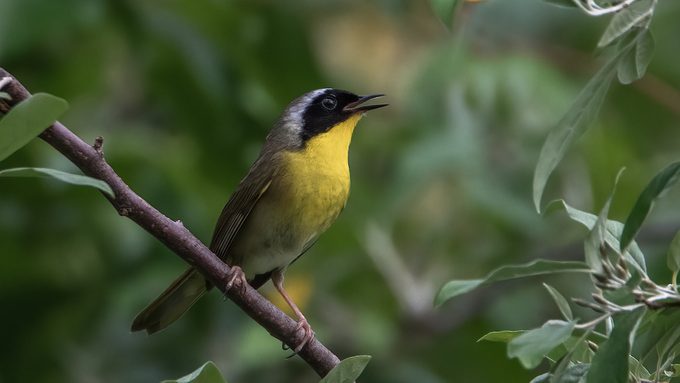
Spring migration is an exciting time. Millions of birds are returning to their breeding grounds, wearing bright new plumage and ready to find mates. This is the time to see species that only pass through twice a year, so it’s worth the effort. Learn about the four North American flyways. Here are some hotspots for the Great Lakes region and along the Gulf Coast. Contact your local Audubon Society chapter to get your best bets.
May: Learn to Identify 10 New Bird Calls in Your Area
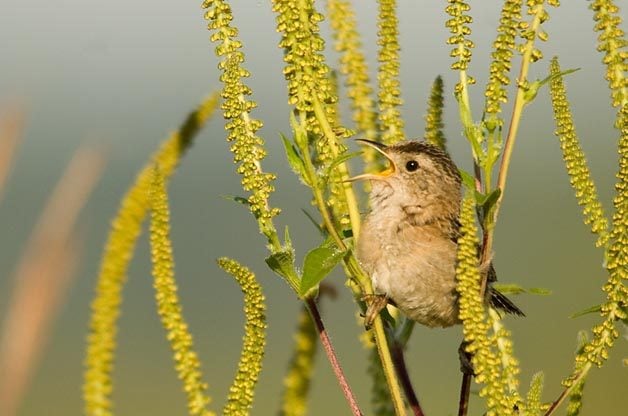
The best birders can identify birds by their songs, making it easier to know what they’re looking for through binoculars. Spring is the perfect time to learn new calls, since birds sing the most in spring as they begin nesting. Head to the Cornell Lab of Ornithology’s Bird Song Hero game to keep learning the fun way.
Learn what a Carolina wren call sounds like and what a cardinal song sounds like.
June: Grow Your Own Birdseed
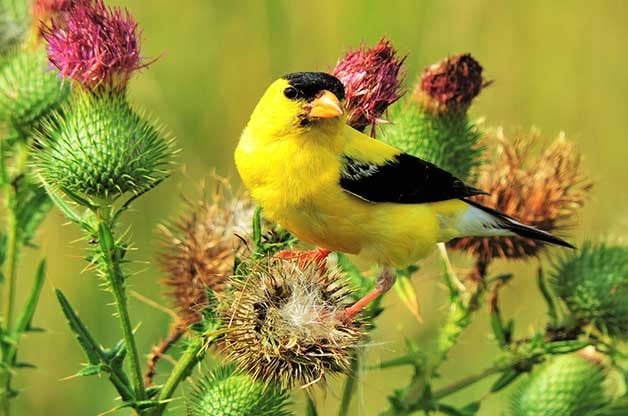
Bird feeders are great, but many birds seek out wild sources for the seeds they love. Plant a bird garden this year, with sunflowers, coneflowers, thistle and more.
Check out our list of birdseed you can grow.
July: Try Birding After Dark
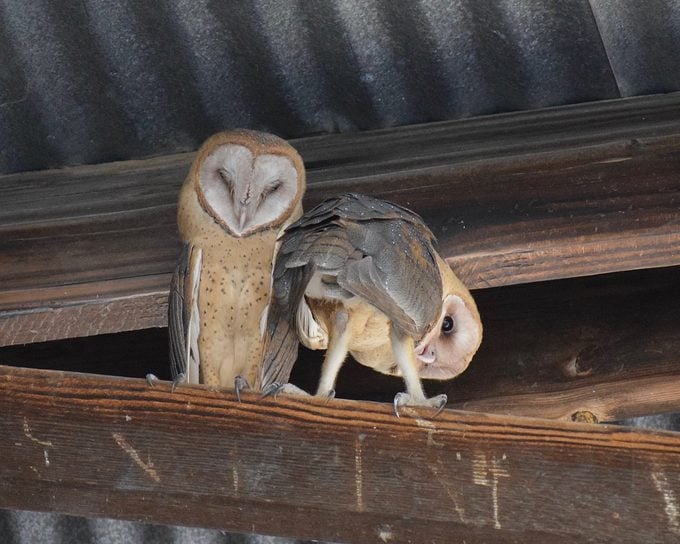
Everything is different once the sun goes down. Most birds are tucked away in their roosts overnight, but others make the most of this time. Owls are the obvious birds to seek out after dark. Learn their calls first so you’ll know where to look, then grab your flashlight and head out to explore.
Discover the joys of sunset with birds.
August: Snap More Photos of Your Bird Visitors
Make it your goal to spend more time photographing birds in your own yard. Set up a simple blind near your feeders, or just sit quietly and be ready to snap away. Get tips on bird photography. Use your bird photos to make unique holiday gifts this year. Create a photo calendar, make fridge magnets or Christmas tree ornaments.
September: Join a Bird Field Trip
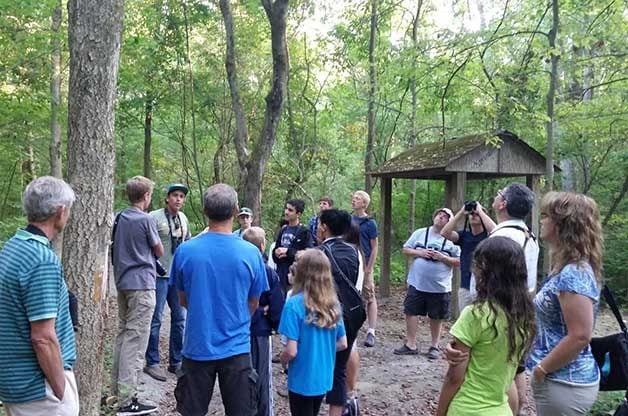
Birding with others is a unique experience. More people are able to spot more birds, sharing their sightings with the group. Many Audubon Society chapters organize local field trips, or you can sign up for a field trip at birding festivals held around the country. Google “bird field trips” or contact your Audubon chapter for more information.
Here’s how to find the perfect bird festival for you.
October: Don’t Forget Fall Migration
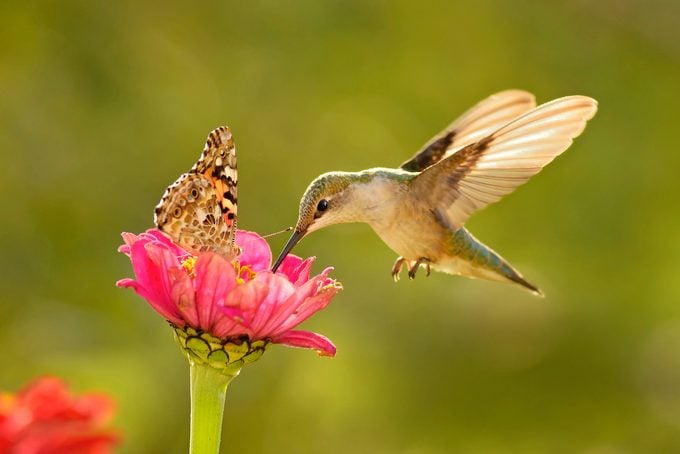
Fall migration isn’t always as spectacular as spring, as many birds have lost their breeding plumage. But this is the time when ducks and other waterfowl gather in the millions to make their spectacular journeys, as do sandhill cranes. In the southwest, hummingbirds pass through areas like Arizona in large numbers and a dizzying array of species. Seek out these amazing fall migration hotspots as the birds journey south.
November: Do More to Attract Birds in the Winter
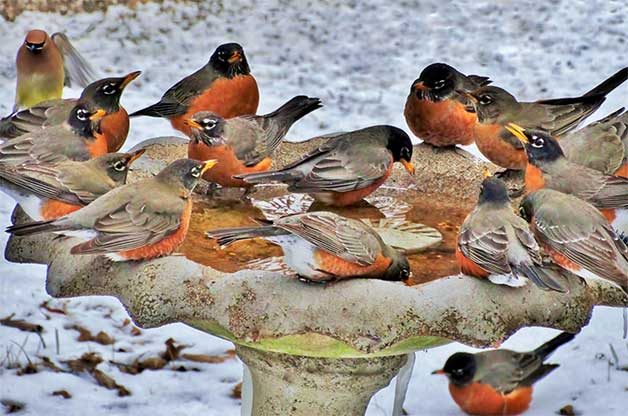
Winter is a wonderful time to watch birds at your feeders, so make it one of your birding resolutions to bring even more of them to your yard. This year, attract even more birds by making sure they have a water source available on even the coldest days. Leave perennials with seed heads still attached in your garden, and provide winter shelter for cold nights and snowy days. Plan how you’ll keep your feeders full during bad weather (larger capacity feeders are great options in the winter), and be sure you can see your feeders and bird baths from your windows so you can enjoy your visitors all winter long!
December: Join the Christmas Bird Count
For more than 100 years, birders have been gathering in December to count birds for science. Sponsored by the Audubon Society, the Christmas Bird Count provides the data that scientists use to study long-term bird health and status. It helps determine which species and habitats are most in need of conservation, and where success stories are taking place.
